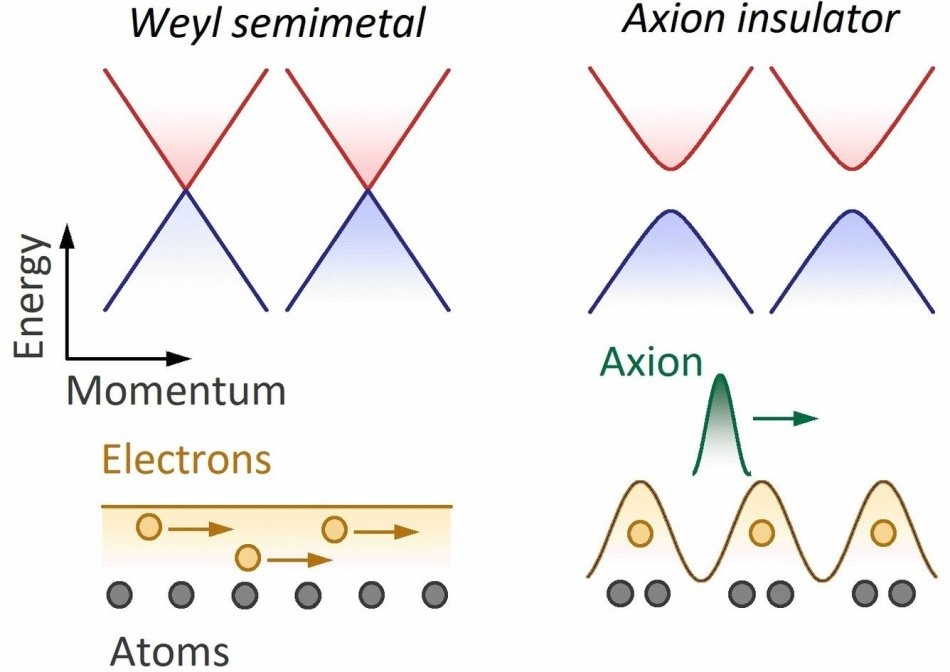Oct 9 2019
Researchers from the Max Planck Institute for Chemical Physics of Solids in Dresden, Princeton University, the University of the Chinese Academy of Sciences, and the University of Illinois at Urbana-Champaign have discovered a prominently elusive particle—the axion.
 Scheme of a Weyl-semimetal-based axion insulator. (Image credit: MPI CPfS)
Scheme of a Weyl-semimetal-based axion insulator. (Image credit: MPI CPfS)
This particle was first predicted 42 years ago as a fundamental particle in extensions of the standard model of particle physics.
The researchers discovered signatures of axion particles containing Weyl-type electrons, or Weyl fermions, in the corresponding Weyl semimetal (TaSe4)2I. At ambient temperature, (TaSe4)2I is a one-dimensional crystal, and the electrical current is transferred by Weyl fermions.
But when (TaSe4)2I is cooled to less than -11 °C, the Weyl fermions themselves condense into a crystal known as “charge density wave,” which alters the basic crystal lattice of the atoms. The originally free Weyl fermions are now localized and the first Weyl semimetal (TaSe4)2I turns into an axion insulator.
Just as free electrons exist in metallic atomic crystals, the Weyl semimetal-based charge-density-wave crystal accommodates axions capable of conducting electrical current. These axions, however, behave indeed different from the well-known electrons. These, on exposure to parallel magnetic and electric fields, generate an anomalous positive contribution to the magnetoelectric conductivity.
According to predictions by Andrei Bernevig’s team at Princeton University, the team of Claudia Felser in Dresden synthesized the charge density wave Weyl metalloid (TaSe4)2I and examined its electrical conduction under the effect of magnetic and electric fields. It was discovered that below a temperature of -11 °C, the electric current in this material was, in fact, carried by axion particles.
The study findings were reported in Nature magazine.
It’s very surprising that materials that we think we know are suddenly showing such interesting quantum particles.
Claudia Felser, Study Lead Author, Max Planck Institute for Chemical Physics of Solids, Dresden
The analysis of the novel properties of axion particles in table-top experiments could help researchers to gain better insights into the enigmatic world of quantum particles and open up the area of highly correlated topological materials.
Another building block to my lifelong dream of realizing ideas from astronomic and high-energy physics with table-top experiments in solids.
Johannes Gooth, Max Planck Institute for Chemical Physics of Solids, Dresden